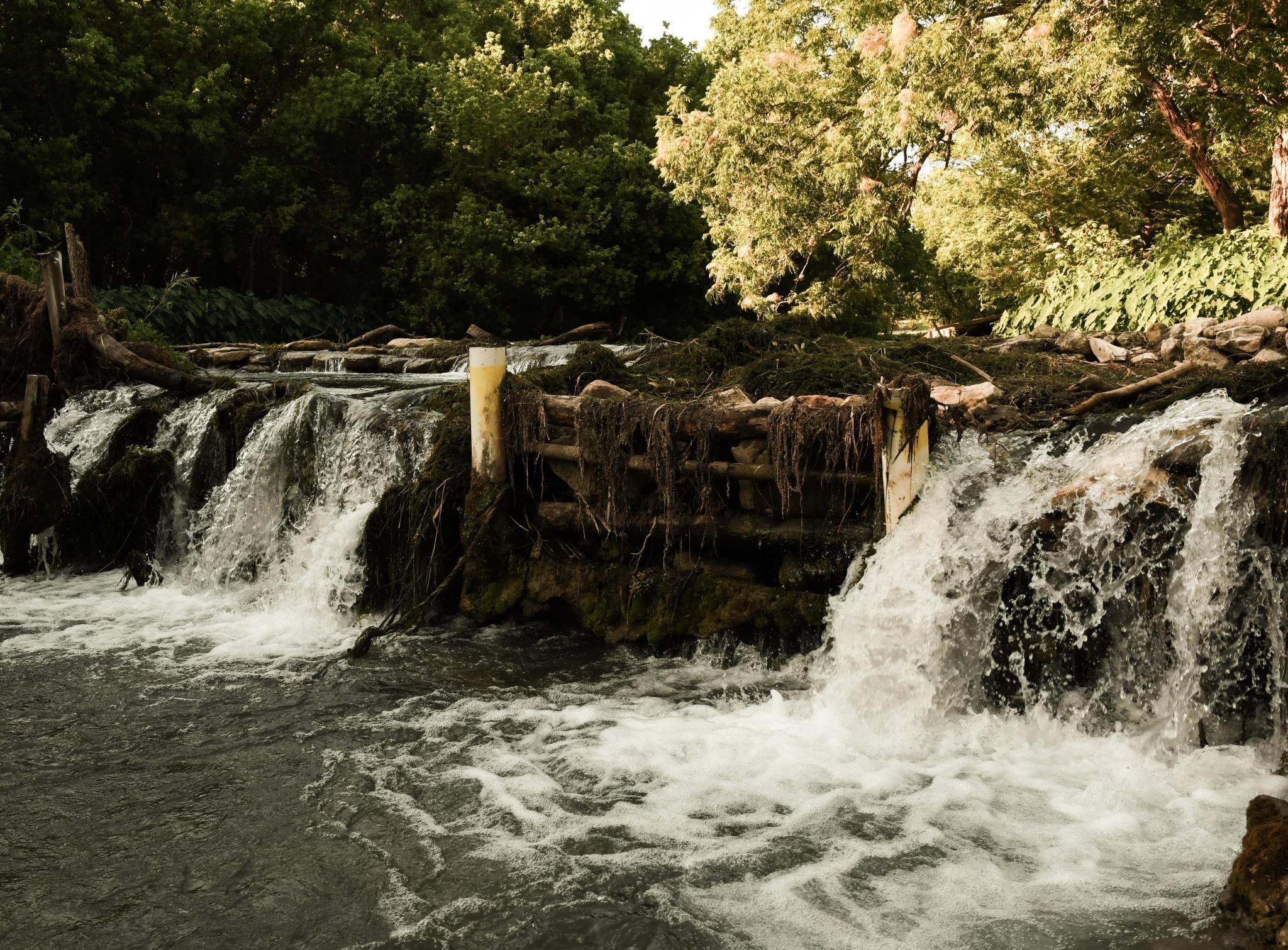
Daily Record file photo
Cape’s Dam denied landmark designation
Though the final decision is the city council’s, the Planning and Zoning Commission voted Tuesday night to deny local historic landmark status to Cape’s Dam and the ditch structure associated with it.
P&Z Chair Jim Garber made it clear that the decision on historic landmark designation is a separate issue from the merits of demolishing or rebuilding the dam.
“We are not agendized to speak on its preservation, its removal, its reconstruction, or anything like that,” he said.
The status of Cape’s Dam has been a contentious issue for years. Some believe the dam should be preserved and rebuilt and that the mill race it creates is useful for recreation. Others believe the dam harms the river, hindering its natural flow and depriving endangered species of habitat. The dam was deemed eligible for the National Register of Historic Places in the 1980s but the owners at the time did not go through the process of getting it on the register. The city council had opted more than two years ago to have the dam removed through a program available through the U.S. Fish and Wildlife Service (USFWS), but any work toward the dam’s removal has been halted, and the USFWS has withdrawn funding.
‘A historic resource’
Commissioner Angie Ramirez made the motion to deny landmark status.
“I’m uncomfortable putting this kind of designation on the river,” she said, and with historic preservation groups making decisions that affect the river’s health. “... It’s a huge part of my family’s life, but I’m not going to sit here and say that the most important job of that stretch of the river is to remind us of the things we have built as people.”
Other commissioners disagreed. Garber noted that history would not be the only factor in determining the fate of the dam,
“If anything were to be done to the dam — anything — it would require an unbelievably complex permitting process,” he said.
To either refurbish or remove the dam, Garber said, the Texas Historic Commission, USFWS, possibly the U.S. Army Corps of Engineers and other federal and state agencies would have to weigh in.
“So the feds would be involved, the state would be involved, and it wouldn’t just be about history,” Garber said. “It would be about water flow, endangered species, species habitat and history.”
Garber also stated that the dam is “a historic resource” that deserves designation as such.
Commissioner Kate McCarty asked if granting the dam and ditch local landmark status would make it more complicated or less complicated for the city to take future action regarding the dam, or if it would have little impact.
“I would say actually little impact,” Garber said, “because the feds and the state would be all over this, no matter what we do.”
Public comments
During public comments and the public hearing on landmark status for the dam, numerous residents spoke in favor of designating Cape’s Dam as a historic landmark. Kate Johnson, chair of the Hays County Historical Commission, spoke about the dam’s significance and the need to preserve local history. Carol Overall said, “My maiden name was Cape,” and said it would be a “great tragedy” to see that area along the river ruined.
Fraye Stokes also spoke in favor of landmark designation and gave a detailed description of how Stokes Park — adjacent to Cape’s Dam — came to be.
“Back in 1992, my husband’s health was failing, and he wanted to do something nice for the people of San Marcos. So we talked it over and donated Stokes Park to the state. They gave management to the city of San Marcos,” she said. “It was donated by us with the understanding — a verbal understanding — that it would always be open to the public, so the public could swim, picnic and play.”
Stokes said the Boy Scouts and veterans use the mill race for kayaking because it’s safe.
“It’s a pleasant ride down the mill race. There are no fallen trees in it like there are in the real river,” she said.
She also asked the commissioners and audience members to look at all sides of the issue.
“Some of the information that y’all have been given is wrong,” she said. “Please, please, please research carefully all sides to this. And let’s have a beautiful park at Stokes Park and at Cape’s Park.”
Dianne Wassenich, speaking for the San Marcos River Foundation, said the organization recognizes the historic significance of the dam but does not believe it should be preserved.
“We do not have an objection to the history being preserved,” she said. “... The dam should not be preserved. The dam itself is harmful to the river. I don’t think if you make it a landmark — national or local historic landmark — it means the dam has to be preserved.”
City planner Alison Brake affirmed that landmark designation does not automatically mean preservation.
“It doesn’t mean that the dam has to be preserved, but if it is, that plan would come to the Historic Preservation Commission. If there was a push to remove the dam, it would also go to the Historic Preservation Commission,” she said.
City Attorney Michael Cosentino agreed: “The designation will not compel a specific outcome.”
With P&Z’s passage of a motion to deny local historic landmark status for Cape’s Dam and the ditch structure, the matter will go to city council with a recommendation to deny.











